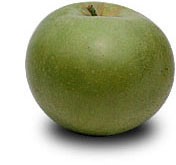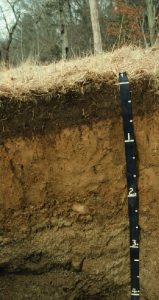by Stephen Hale

American burying beetles, a federal endangered species whose only population east of the Great Plains is on Block Island.

Rhode Island Greening (Photo: RI Dept. of State).
Every state has a list of official state symbols, but Rhode Island is unique in having an official state appetizer. At least seventeen of Rhode Island’s state symbols relate to plants and animals and rocks (see table and images). Relative to the state’s diminutive area, that number shows Rhode Island is one of the nation’s leaders in honoring its natural history heritage. If we named an official state microbe (as does Oregon, brewer’s yeast Saccharomyces cerevisiae) and a state dinosaur (e.g., Missouri, a duck-billed Hadrosaur Hypsibema missouriense), we’d have better coverage of the size range. Sadly, no dinosaur fossil has ever been found in Rhode Island, but there is always Hope (official state motto).

Narragansett Silt Loam, the unofficial state soil. (Photo: nesoil.com).
Official state symbols of Rhode Island with a natural history connection:
Flower: violet (Viola sororia)
Fruit: Rhode Island Greening [a variety of apple] (Malus pumila)
Tree: red maple (Acer rubrum)
Shell: quahog (Mercenaria mercenaria)
Insect: American burying beetle (Nicrophorus americanus)
Fish: striped bass (Morone saxatillus)
Bird: Rhode Island Red (Gallus gallus domesticus)
Marine Mammal: harbor seal (Phoca vitulina)
Drink: coffee milk (cow-Bos taurus; coffee-Coffea spp.; cane sugar-Saccharum officinarum)
Appetizer: calamari (longfin squid-Doryteuthis pealeii)
Tartan: State of Rhode Island tartan (sheep’s wool-Ovis aries)
Carousel: Charles I.D. Loof Carousel (wood-various species in the Spermatophyta clade)
Mineral: Bowenite
Rock: Cumberlandite
Soil: Narragansett Silt Loam (unofficial)
Pingback: – Where Rhode Island Excels: the Natural History of Rhode Island State Symbols
I found a type specimen of an insect in the fossil collection at Brown University when I was cataloging the collection to be moved. It was donated to the Museum at Harvard University. Maybe that could become our state fossil even though it’s not a dinosaur! I didn’t know about the Tartan. Thanks for this great list!
Laurie, I don’t suppose you remember which insect it was?